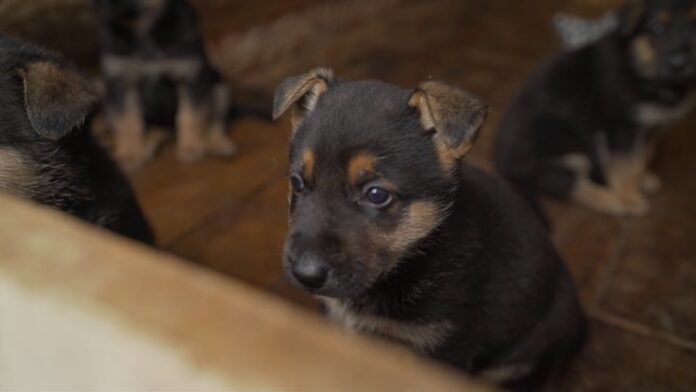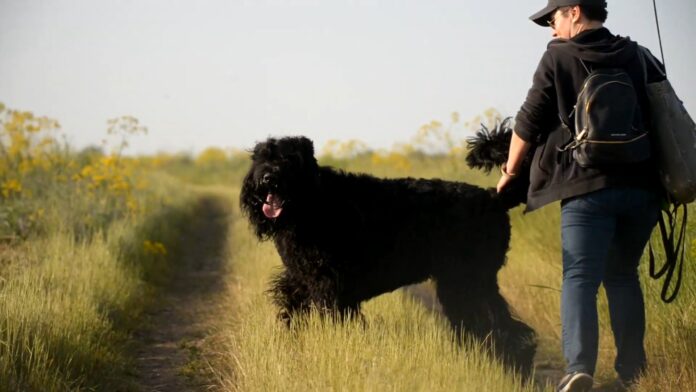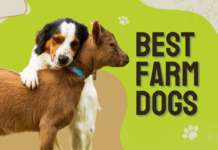It’s no surprise that dogs, just like humans, are spread out across the globe, with different breeds belonging to different parts of the world. Diversity is a good thing; it reminds us that the world is not flat, and that there are a lot of options to choose from. We all welcome the idea of diversity, and when it comes to dog breeds, the more the better.
What most dog lovers were surprised to hear was that there were a lot more dog breeds found in Russia than we have originally thought, and the good thing about it is the fact that these breeds are just now starting to gain popularity worldwide, making the already existing selection of dog breeds, that much wider and that much more diverse.
The Trials and Tribulations of Dogs in Russia
One thing that you must understand before proceeding is the fact that for almost a century, the thick iron curtain of communism has affected the entire world, and dogs are no exception.
They have been hit hard by the social changes, and in ways that are unfathomable to us now. To put it into perspective, before the Russian revolution, the Samoyed, Borzois, and Bolonkas were considered “aristocratic toys” and “useless playthings”, and have subsequently been deemed unfit to be a part of the new socialist order that was instated.
The poor dogs were ousted and chased away in order to make room for the new working dog breeds, dogs that were supposed to work side by side with man in order to achieve the goals of the communist machine.
It’s not all dark and gloomy though, because these breeds have been saved from extinction just in the nick of time, thanks to dog lovers from Western Europe and the United States.

The Samoyed managed to weave its way in by the skin of its teeth as a sled dog though, and the breed has managed to remain a part of Russian life throughout those dark years.
Not all stories have a happy ending though, and sadly the same goes with dog breeds. The Russian Newfoundland, a breed specifically created for Russian life, was declared extinct in the 1980s, and given how secretive Russia was in those years, there might be a lot of breeds that we don’t know about that are now extinct as a result of the reforms in place at the time.
One thing to mention here is the fact that even though Russian dogs are starting to gain traction and a substantial increase in popularity, these breeds are still fairly rare, and as such most of them are not yet recognized by international kennel clubs, nor standardized by them.
The only exceptions are the Russian black Terrier and the Russian Toy, due to their popularity and their spread around the world.
That being said, these dogs are quite rare outside their native country, so if you are thinking of adopting an individual from a Russian dog breed, you might find yourself either paying a bit more for shipping or on a plane to Russia.
Pre-Soviet Dog Breeds
Indeed, we cannot go around the fact that the Soviet period had a significant impact on Russian dog breeds, however, we can go back to a time before 1917, and have a look at the dog breeds that people in Russia user back then.
Before the Russian Revolution, Russia was known for two things, herding and hunting.
Subsequently, the dog breeds used by the people were herding breeds, guard breeds and hunting breeds.
The aristocrats were dog lovers as well and some of them were even dog breeders, breeding dog such as Bolonkas and Borzois for their beauty and companionship.
What we can see here is a clear split between the breeds that were used by common people. In the northern part of the country, they were using Laikas for both hunting and sledding, while in the southern part of the country the Russian Sheep Dog and the Central Asian Dog were doing a good job of guarding the flocks and herds that were grazing on the pastures.

Again, much of this information was lost over time, and it is quite hard to actually dig up the entire history of the Russian dog breeds. These breeds have been saved from extinction by foreign breeders, and they can be found, all be it with a bit of effort and a bit of luck.
Two of the main characteristics of the dogs from this era are intelligence and loyalty, the 2 traits that were a must in order for these dogs to perform well. Luckily for us, these traits have not been lost, and individuals from these breeds will display them even today.
One of the pre-soviet dog breeds that stands out is the Laika, which translated from Russian means “the barker”. This particular breed is one of the most versatile dog breeds out there, and it can still be found to this day.
They were used as guard dogs, herding dogs, hunting dogs, even sled dogs if push came to shove. It was because of its versatility that the Laika remained unchanged throughout the Soviet years, being accepted as a pure working breed.
Soviet Dog Breeds
As mentioned above, most of the dog breeds in existence at the time were ousted because they were regarded as toys or simply companion pets, and the soviet regime was having none of it.
The entire idea behind the communist movement was heavy industrialization and putting an emphasis on the working class, the middle class. As such, a lot of luxuries had to be given up, except if they either fulfilled a specific role which was beneficial to society, or were able to help man complete his work faster and more efficient.
Dogs were one such luxury, and most breeds were not capable of the tasks ahead of them, however some of them were.
Here are the more popular dog breeds from Soviet Russia:
East European Shepherd

A Russian variation of the German Shepherd bred and adapted specifically for life in the rugged Russian landscape. These dogs are frost resistant, capable of navigating even the most unforgiving terrains and surviving the harshest winter conditions.
They were used primarily in the north part of the country, and later on during World War 2 as military dogs. They sport outstanding physical traits, lean strong muscles, a high endurance threshold and great deal of stamina.
They don’t sport the same beauty traits that made German Shepherds into the superstars that they are today, mostly because of the fact that they were bred with the Soviet ideology in mind, which dictated that it didn’t have to be pretty but it did have to do the job that it was meant to do.
The intelligence is still there though, and it has served these dogs well during their time as working dogs, being able to not only pace themselves properly, but also adapt and find new ways of dealing with the environment while at the same time doing their job.
The Russian Newfoundland

A Russian variation of the Newfoundland that we all know and love today, this breed was designed to be one of the staple working dogs of the soviet era.
Larger, stronger and more resilient than the Newfoundland, the Russian Newfoundland was not only capable of carrying heavy loads, but also to survive and function in environments that were not exactly suited for dogs in the first place.
Again, this was one of the breeds that were later used in World War 2, however unlike the rest of the breeds which were used to carry hidden messages or scout the terrain, the Russian Newfoundland was trained to attack and kill enemy soldiers.
With the physical prowess and the strength to do so, this dog did just that, however there were some problems with the breed.
First of all, it was a difficult breed to train, often times being too strong willed and too independent to follow the commands given. The Soviets had their ways, and they managed to train the vast majority of them to do the jobs that they were bred to do.
Sadly, this breed was declared extinct in 1980, and there are a lot of rumors and speculations surrounding the reasons for the extinction.
Some say that the breed was simply worked to death, while some say that it was too strong willed to be worth the time and that the soviets stopped breeding them all together.
Whatever the reason, we cannot know for sure.
The Moscow Dog
Also dubbed the Moscow Watchdog, this dog breed carries with it a strong resemblance to the Saint Bernard breed, in more ways than one.
First off, this is a giant breed, sporting a thick coat and enough power behind it to fight a bear and emerge victorious.
These dogs were primarily used as guard dogs and later on they were used by the military and trained to handle military action.
When it comes to their temperament, these, just like the Saint Bernards, are gentle giants, being great as both guard dogs and family dogs. They love spending time with children, and are usually very calm and docile.
They tend to get very attached to their masters and their families, so much so that they become a bit overprotective and suspicious of new people around their families.
They are lovable and loving dogs, and serve well as family dogs, however they don’t do well in small apartments. These are giant dogs, and they need a lot of space to live in, which is why it is recommended that these dogs be kept in houses with relatively large yards so that they can stretch their muscles and get their daily dose of exercise.
These dogs can still be found today, and a lot of people are taking an interest in them. Do expect for this breed to become more popular in the future and thus more readily accessible.
The Black Russian Terrier

Often regarded as the Black Pearl, this particular dog breed was bred solely by the Soviet government from the 1940s all the way to the late 1950s, when puppies started being sold to civilian breeders.
They were initially bred to be the perfect working dog, sporting a fragile balance between strength, stamina, agility and willpower. They were primarily used by the military, and trained to be service dogs, generally used by law enforcement and military bodies alike. Later on they were used to haul supplies via carts.
Their temperament is something that is more or less unique to the Black Terrier, and it is what made it such a good service dog. They are calm, reliable, confident and most of all, self-assured. They are more or less a rock, unshakable and unmovable.
This temperament does not come by itself though, it requires some training before it manifests itself, and with the right amount of patience and dedication, you will manage to make your black terrier into a real Black Pearl.
There is a small downside though. These dogs were bred initially to be loyal guard dogs, therefore they are intelligent, responsive to training and very loyal to their families. So much so that they become weary of strangers and don’t take too kindly to strange people or dogs intruding in their territory or personal space.
Socializing this dog is a must in order to make sure that accidents don’t occur, however this dog is known to be very responsive to training, so it should not be much of an issue. The Russian Black Terrier is a medium to large sized breed, so it should theoretically handle being kept in a small apartment, however it advised not to.
These dogs still need their exercise, and they still need a respectable amount of room in which to live, not to mention that they are territorial dogs, so they do love their personal spaces.
It is advised that this dog be kept in medium or large apartments, or in a house with a decent yard in which the dog can run around and more or less get some of the exercise that it needs.
The Soviet Way of Breeding Dogs
It is important to understand the lineage and the heritage that certain dog breeds bring to the table. While it might be a bit difficult to understand, the Russian Dog Breeds have quite a story to tell, which will shed some insight on how these breeds were conceived and how the soviets came about creating them.
First of all, yes, the soviets were into breeding dogs, but not all dogs though, only the ones that were deemed fit to serve as working dogs.
And the way in which they achieved this was via the Red Star Kennel. This was a government-funded and controlled project which served no other purpose than to carefully select the breeds that were to be used in order to create the working dog breeds that we know today.
There have been records found that date the Red Star Kennel to as far back as 1924. It became more and more important for the Soviet Government when World War 2 started, and they quickly realized how versatile a dog actually is in a combat theatre.
Up until the late 1950s, the government was the sole dog breeder in Russia, with careful population monitoring and population control. They did a fairly good job though, because at the start of World War 2, more than 60 thousand military dogs were trained and ready for action, and that was just the military aspect.
Read about the most common mistakes that happen when training your dog.
Towards the end of the 1950s, however, the government started giving puppies to the civilian population, encouraging them to breed the dogs independently.
In Conclusion
There is quite a bit of history behind Russian dog breeds and for good reason. The soviet years were not kind to them, and a few breeds have sadly gone extinct.
There are around 20 documented Russian dog breeds out there, and you can own an individual of these breeds if you so desire. Currently, there are not that many reasons why you would want to do so, and let’s face it, getting hold of an individual from a rare breed is quite a hassle.
There will be some effort required in order to obtain a Russian dog, and you will have to spend a bit of money in order to see him or her in your home, however, at the end of the day, the feeling of owning an individual from such a breed, with all the glamour and prestige that it brings, is worth it.
If you are willing to jump through all the hoops and jump over every hurdle, you will find that it was all worth it as you sit there petting and caring for your new Russian dog.




